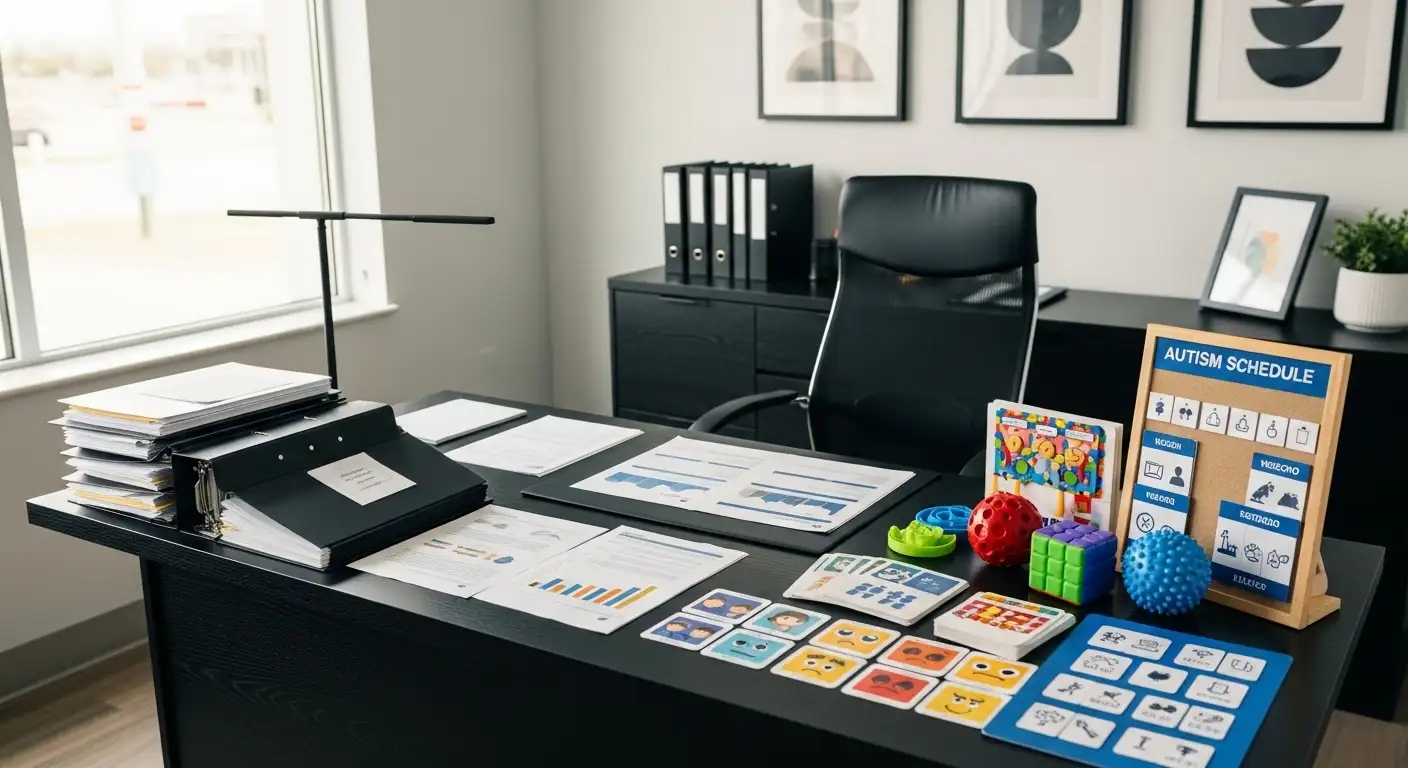How ABA Therapy Promotes Positive Peer Interactions
Enhancing Social Skills Through Applied Behavior Analysis

Introduction to ABA Therapy's Role in Social Development
Applied Behavior Analysis (ABA) therapy has long been recognized as a beneficial approach in improving social interactions, particularly for individuals with Autism Spectrum Disorder (ASD). It utilizes various techniques and principles aimed at developing communication and social skills critical for everyday interactions. This article explores how ABA therapy promotes positive peer interactions, emphasizing early intervention, school-based programs, and group therapy settings. By employing evidence-based strategies, ABA therapy not only helps individuals with autism but also fosters a more inclusive and empathetic community.
Role of ABA Therapy in Enhancing Social Interactions

What is the role of ABA therapy in improving social interactions for individuals with Autism Spectrum Disorder (ASD)?
ABA therapy plays a crucial role in improving social interactions for individuals with Autism Spectrum Disorder (ASD) by utilizing structured, evidence-based techniques tailored to the individual's needs. This therapy starts with a thorough assessment to identify specific social skill deficits.
Structured interventions for social skill development
Once areas for improvement are identified, personalized intervention plans focus on enhancing communication, social engagement, and interpersonal interactions. Here’s a breakdown of how ABA targets social skills:
| Intervention Focus | Description | Purpose |
|---|---|---|
| Verbal behavior training | Teaching categorization of language and usage | Promotes effective communication and peer interaction |
| Social skills training | Teaching sharing, turn-taking, and group activities | Enhances interaction and relationship-building |
| Peer modeling | Encourages observation and emulation | Facilitates learning of socially appropriate behaviors |
| Role-playing exercises | Provides practice in a safe environment | Builds confidence in social skills |
Practical applications through role-playing and peer modeling
The therapy effectively employs methods such as role-playing and peer modeling. These techniques allow individuals to practice essential skills like initiating conversations, taking turns, and interpreting social cues. Through these controlled exercises, individuals boost their confidence and learn to generalize these skills in real-world scenarios.
Collaboration across various settings
Additionally, collaboration with families and schools ensures that social skill development is reinforced across various contexts. This partnership not only enhances ongoing support but also promotes social inclusion by helping individuals transcend the boundaries of therapy sessions into their everyday interactions, significantly improving their overall quality of life.
Key Techniques in ABA Therapy for Communication and Social Skills

What are the main principles and techniques used in ABA therapy to enhance communication and social skills?
ABA therapy utilizes a variety of techniques designed to improve communication and social skills in individuals with Autism Spectrum Disorder (ASD). At the heart of this approach is positive reinforcement, a powerful technique that rewards desired behaviors, such as greeting peers or sharing, thereby increasing the likelihood of these behaviors in future interactions. This method enhances social skills through consistent encouragement and motivation.
Additionally, shaping is another key technique, where complex social skills are broken down into smaller, manageable tasks. This allows individuals to gradually build competence; for example, mastering turn-taking can start with simply waiting for a brief moment before responding in conversation.
How does ABA therapy adapt real-world settings for practice?
An important aspect of ABA therapy is the emphasis on Natural Environment Training (NET). This method encourages individuals to practice their newly acquired skills in real-world environments such as schools or community settings. By applying learned behaviors in these contexts, individuals gain confidence and proficiency in social interactions, such as initiating conversations during recess or participating in group activities.
What role do social stories and role-playing play in ABA therapy?
To teach social expectations clearly, social stories are utilized in ABA therapy. These narratives guide individuals by outlining specific social scenarios, helping them understand appropriate behaviors and responses. Simultaneously, role-playing exercises offer a controlled environment where individuals can practice these social skills before applying them in real life. This combination allows for immediate feedback and reinforcement, solidifying learning and enhancing overall communication capabilities.
| Technique | Purpose | Application Example |
|---|---|---|
| Positive Reinforcement | Increases desired behaviors | Rewarding a child for initiating a conversation with a peer |
| Shaping | Breaks down complex skills into manageable steps | Teaching turn-taking by starting with waiting for a short period to respond |
| Natural Environment Training | Facilitates real-world skill application | Practicing social skills during recess or community outings |
| Social Stories | Teaches appropriate social behaviors and expectations | Using a story about a group project to explain sharing and cooperation |
| Role-Playing | Provides opportunities to practice skills | Simulating a birthday party scenario to practice greetings and interactions |
Early Intervention's Impact on Social Skills Development

How does early intervention through ABA therapy benefit social skills development?
Early intervention through ABA therapy significantly enhances social skills development by capitalizing on the neuroplasticity of young children's brains. At an early age, children's brains are more adaptable, allowing for the establishment of new neural pathways that support enhanced learning and interaction. This crucial period enables them to better articulate their needs and engage with peers, fostering better communication skills.
ABA therapy employs systematic approaches to target core deficits that affect social functioning. Skills such as understanding social cues, turn-taking, and conversational engagement are vital for forming meaningful relationships. Addressing these components early prevents maladaptive behaviors from becoming entrenched, making social participation smoother and more fulfilling for children.
Moreover, early intervention can significantly reduce challenging behaviors that may hinder social engagement. With focused strategies and positive reinforcement, children learn to manage their responses and interact positively with others.
In conclusion, early ABA interventions not only enhance immediate social interactions but also lay the groundwork for long-term improvements in children's quality of life and academic achievements.
Benefits of School-Based ABA Therapy

What is the significance of school-based ABA therapy in helping children with autism interact with their peers?
School-based ABA therapy plays a critical role in facilitating interactions among children with autism by integrating them into their learning environment. The consistent framework of ABA therapy in schools allows for repeated practice of social skills in daily scenarios, such as group activities or recess, where natural peer interactions occur.
How are peer-mediated strategies implemented?
Peer-mediated strategies are vital in this context, allowing children to learn and engage with their classmates. This includes:
| Strategy | Purpose | Impact |
|---|---|---|
| Group Projects | Collaborative work | Enhances teamwork and communication skills |
| Role-Playing | Practicing social scenarios | Reduces anxiety in real-life interactions |
| Positive Reinforcement | Encouragement for social behaviors | Boosts confidence and sharing skills |
How does school-based ABA support real-world skill application?
Engagement in real-world settings proves essential for developing and applying social skills learned during therapy sessions. Children benefit from:
- Structured Learning: Lessons learned in therapy are applied to everyday school activities.
- Peer Learning: Observing and modeling peer behavior fosters a comfortable environment for practice.
- Motivation Boost: The presence of classmates encourages participation and makes socializing more enjoyable.
In summary, school-based ABA therapy nurtures effective social skills, promoting inclusivity and mutual respect among all students, thereby enriching the classroom experience.
Collaboration and Community in Group ABA Therapy

How can group ABA therapy foster collaboration and community among peers?
Group ABA therapy is designed to create a structured environment where children with Autism Spectrum Disorder (ASD) can come together to practice and enhance their social skills. This setting fosters collaboration among peers by encouraging interaction, communication, and engagement in shared activities. As they participate in group sessions, children observe and learn from one another, leading to enhanced peer support and shared learning experiences.
Each session is carefully structured to include activities like role-playing and cooperative games, promoting skills such as turn-taking and sharing. This collaborative approach is particularly beneficial for children who might be hesitant to engage in one-on-one therapy, as they feel more comfortable among peers.
What holistic development strategies are integrated into group therapy?
In addition to focusing on social skills, group ABA therapy incorporates a variety of therapeutic techniques to support holistic development. These can include:
| Therapeutic Technique | Purpose | Benefits |
|---|---|---|
| Speech Therapy | Enhances communication skills | Facilitates better interactions and expression |
| Occupational Therapy | Addresses sensory and motor skills | Improves participation in group activities |
| Parent Involvement | Encourages consistency and support | Strengthens the home-school connection |
Through integrative methods, therapists work together, ensuring that the unique needs of each child are addressed, which aids not only their social development but also their overall emotional and cognitive skills.
What are the long-term benefits for peer relationships?
The long-term benefits of group ABA therapy extend beyond immediate social interactions. By cultivating strong peer relationships, children develop a sense of belonging and community, which significantly impacts their social confidence. The skills learned during these sessions—such as patience, empathy, and effective communication—prepare them for real-world social scenarios.
Additionally, the relationships formed in group therapy can lead to enduring friendships, reducing feelings of isolation and promoting a more inclusive environment. As children continue to enhance their social capabilities in these collaborative settings, they reinforce their identity and understanding of social norms, allowing them to thrive in diverse social situations.
Techniques for Promoting Positive Peer Interactions
What techniques are used in ABA therapy to promote positive peer interactions?
In ABA therapy, a variety of effective techniques are utilized to enhance peer interactions for individuals with autism. One prominent method is role-playing, where participants practice specific social scenarios in a safe environment. This approach allows individuals to explore different social cues and responses, fostering a deeper understanding of peer engagement.
Peer modeling is another technique, enabling individuals to observe and imitate appropriate behaviors demonstrated by their peers. This observational learning reinforces social skills, making interactions more natural and intuitive.
How do structured activities and reinforcement support these interactions?
Structured activities play a crucial role in facilitating peer interactions. Group sessions often include collaborative games and tasks that encourage sharing, turn-taking, and teamwork. Through these activities, children are provided with opportunities for meaningful social exchanges, allowing them to practice learned skills in real-time. Furthermore, ABA therapy incorporates positive reinforcement to celebrate successful social interactions, such as praise or tokens, which encourages children to continue engaging positively with their peers.
What role does parental involvement play in supporting skill development?
Parental involvement is vital for reinforcing skills learned during therapy. Educating parents about strategies and techniques used in sessions empowers them to implement these approaches at home. This family engagement significantly extends practice opportunities, ensuring consistency and supporting the child's development of social skills beyond the clinical setting.
In summary, ABA therapy employs role-playing, structured activities, positive reinforcement, and parental involvement to create a supportive environment that nurtures positive peer interactions. Through these methods, individuals with autism can build confidence and foster connections with others.
Concluding Thoughts on ABA Therapy's Influence
ABA therapy's systematic and empathetic approach provides essential support for individuals with autism, facilitating improved social interactions and community inclusion. By focusing on tailored interventions, real-world practice, and family involvement, ABA therapy fosters skill development and paves the way for positive peer relationships. Its comprehensive application in various settings, combined with techniques like role-playing and group activities, ensures a supportive environment where individuals with autism can thrive and contribute meaningfully in their social realms.
References
- The Role of ABA Therapy in Enhancing Communication Skills
- Mastering Social Skills: ABA Therapy for Autism
- The Importance of Early Intervention with ABA Therapy
- School-Based ABA Therapy - Surpass Behavioral Health
- Group ABA Therapy: Bright Futures for Autistic Children
- Improving Social Skills in ABA Therapy - Cubik Minds
- ABA Family Therapy: Nurturing Positive Relationships in Autism ...
- Autism to Peers: Educating Friends and Classmates | ABA Therapy
- Group vs. Individual ABA Therapy for Children With Autism







